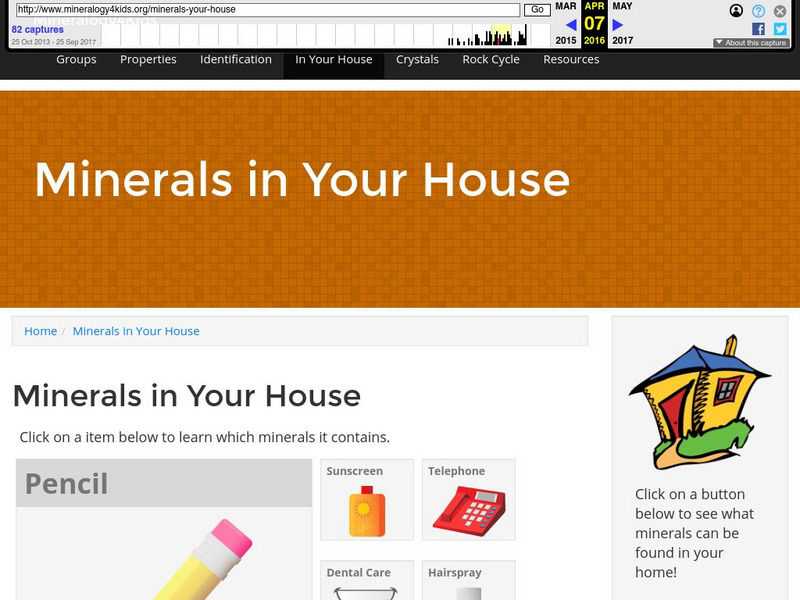Hi, what do you want to do?
Science Buddies
Science Buddies: Where There Is Charge, There Can Be Sparks!
In this short science project you will learn how to build a capacitor using common household items. By testing different charge cycles, you will work to discover how much charge is stored in a Leyden jar capacitor.
Technovation
Curiosity Machine: Challenge: Build a Blooming Flower
Can you create a blooming flower that would attract pollinators? This Curiosity Machine project challenges students to make this flower using common household items. Site includes a place for students to document their process as well as...
Technovation
Curiosity Machine: Challenges: Design a Wind Up Mars Rover
Using common household items, students are challenged to build a Mars rover that can travel using elastic energy. Site includes a lesson plan, tips, and a place for students to document their design process.
Technovation
Curiosity Machine: Challenges: Engineer a Space Tool
Using common household items, make a tool that an astronaut could use to pick up an object in space. This site also includes tips, lesson plans, and a place for students to document their engineering design process.
Technovation
Curiosity Machine: Challenges: Build a 3 D Object Out of Tetrahedra
Can you build a 3-D object out of tetrahedra that is as big as you are? With this challenge, students will be using common household items to build their tetrahedra structure. Site contains the challenge, tips, a lesson plan, and a place...
Technovation
Curiosity Machine: Challenges: Balance a Dinosaur
Using common household items, students are challenged to build a dinosaur at least 6" tall that can balance on two legs using counterbalances. This website contains the challenge, tips, a lesson plan, and a place for students to document...
Physics Central
Physics Central: Physics in Your Glass: Racing Molecules
An easy experiment for demonstrating and exploring molecule movement requiring common household items: two glasses, two dark colors of food coloring, and warm and cold water. A few variations to the experiment will have students using...
University of Washington
Neuroscience for Kids: Dangers of Inhalants
This website provides a very simple explanation of what inhalants are and how they harm the body. Included is a chart showing the names of abused inhalants that are common household items.
Science Education Resource Center at Carleton College
Serc: Birds' Bills
Learners will compare and contrast different kinds of birds' bills and categorize pictures. After drawing the bills in each category, they will then compare the bill types with common household items.
Center of Science and Industry
Cosi Columbus: Cabbage Patch Chemistry [Pdf]
Make your own indicator by using red cabbage leaves and common household items. Includes full list of materials, procedures, and scientific explanation of how to determine if a substance is acidic, basic, or neutral based on the colors...
Other
Mineralogical Society of America: Minerals in Your House
Discover what minerals can be found at your home with this interactive resource. Explore this virtual house and you'll find minerals in common household objects.
Teachers TryScience
Teachers Try Science: Let It Roll
Here's an easy experiment, using common household items, that will show you all ball bearings work.
NASA
Nasa: Paper Comet Model With a Deep Impact [Pdf]
If you're interested in making a comet model from common household items, check out these instructions.
Science and Mathematics Initiative for Learning Enhancement (SMILE)
Smile: Metrics in the Home and in the Store
In this lesson plan site, students will compare SI unit (metric) measurements of common household items and their English equivalents.
Countries and Their Cultures
Countries and Their Cultures: Dyula
"Dyula" is a Manding word typically referring to "traders" as a socio-professional category, particularly to Muslim long-distance traders who speak one or another dialect of Manding. The name is used as an ethnic label by...










![Cosi Columbus: Cabbage Patch Chemistry [Pdf] Activity Cosi Columbus: Cabbage Patch Chemistry [Pdf] Activity](http://lessonplanet.com/content/resources/thumbnails/410122/large/bwluav9tywdpy2symdiwmduymc0ynde4oc0xzxmzchv6lmpwzw.jpg?1589985500)


